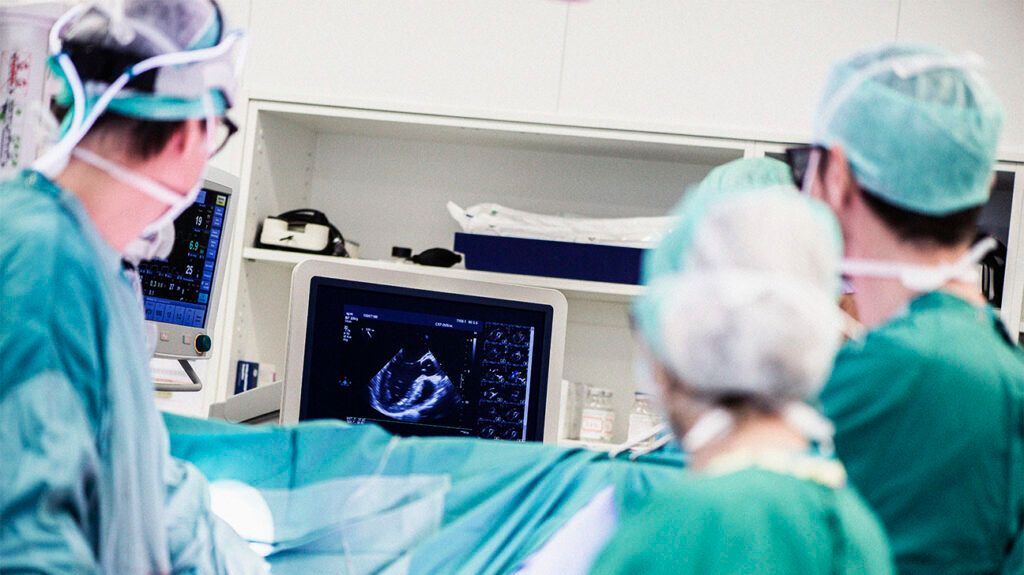The aortic valve sits between the heart’s left ventricle and the aorta. It opens and closes with the heartbeat to allow blood to flow to the body without leaking back into the heart. It may need to be repaired or replaced with surgery when it becomes damaged or dysfunctional.
Aortic valve replacement is a surgery that removes and replaces the damaged aortic valve with a prosthetic valve. It is a major surgery. Not everyone is a good candidate for this surgery.
Aortic valve repair may be an alternative to valve replacement when the anatomy of the valve and aortic root is suitable.
This article overviews the procedure, recovery process, and potential complications of aortic valve repair.

Aortic valve repair
It may involve addressing specific issues or defects in the valve, such as:
- leaflet abnormalities
- valve regurgitation (leakage)
- stenosis, which is a narrowing of the aortic valve leading to decreased blood flow
Why choose aortic valve repair over replacement?
Doctors recommend either valve repair or replacement based on the:
- cause and severity of the problem
- number of valves affected
- person’s symptoms
- person’s general health
Although valve replacement is technically easier than valve repair, doctors may recommend repair for various reasons.
Prosthetic valves that surgeons use to replace natural valves can degenerate or require a person to take blood-thinning medication for the rest of their lives.
Implanted prosthetic valves are also associated with an elevated risk of complications, such as blood clots and endocarditis, which is inflammation of the heart’s inner lining.
A doctor can explain their reasons for recommending a specific type of valve surgery based on their evaluation of a person’s health variables.
Surgeons perform aortic valve repair in one of two ways:
- open-heart surgery
- minimally invasive surgery
Both involve general anesthesia. However, open-heart surgery typically requires a longer hospital stay and higher cost than minimally invasive surgery.
During the procedure, the surgeon makes one or more incisions to access the heart and valve.
A heart-lung machine takes over blood flow, allowing the surgeon to reshape, replace, or repair valve components to restore functionality.
Once repaired, the surgeon closes the incisions, and the heart resumes pumping.
Before a person can have aortic valve repair, their healthcare team conducts tests and evaluations to assess their overall health and determine the extent of valve damage.
An echocardiogram uses ultrasound to provide images of the heart’s chambers and valves. Doctors use it to understand the structure of the valve and leaflets and determine the severity of the leakage or stenosis.
Other preoperative tests may include:
In some cases, the valve structure is not suitable for repair. Replacement of the entire valve with either a bioprosthetic or mechanical valve may be
Once approved for surgery, a person receives specific instructions on preparing for the procedure, including any necessary dietary or medication adjustments.
After the aortic valve repair surgery, the healthcare team closely monitors the person in the intensive care unit (ICU) before transitioning them to a regular hospital room, where they will continue to receive care and monitoring.
People can expect to spend about 7–10 days in the hospital recovering from aortic valve repair surgery. Total recovery time varies.
During recovery, doctors advise to take it easy, avoid strenuous activities, including heavy lifting, and follow any medication and rehabilitation plans their healthcare team prescribes.
The success rate of aortic valve repair surgery is generally high. Most people experience improved valve function and symptom relief.
A
- around 85% of BAV and 93% of TAV cases did not need further valve interventions following surgery
- around 94% of BAV and 83% of TAV cases did not experience severe aortic regurgitation following surgery
- 96–97% of people were still alive 4 years after aortic valve repair surgery
A
Potential risks of aortic valve repair can include:
- infection and bleeding
- recurrent aortic regurgitation (leakage of blood back into the heart)
- arrhythmias (abnormal heart rhythms)
- valve failure
- heart attack
- heart failure
- stroke
- anesthesia complications
The cost of aortic valve repair surgery varies depending on many factors, such as the location of the procedure, the surgeon’s fees, hospital fees, and any additional tests or postoperative care.
According to a study from 2018, estimated in-hospital costs for mitral valve repair were
Read about strengthening the heart valves naturally.
Below are answers to some frequently asked questions about aortic valve repair.
Can the aortic valve be repaired without open-heart surgery?
Yes, in some cases, doctors can repair the aortic valve without open-heart surgery. A catheter-based approach can treat aortic stenosis, improving blood flow without the need for open-heart surgery.
However, not all cases are suitable for these minimally invasive techniques. The decision to repair the aortic valve without open-heart surgery depends on the person’s specific medical condition and the recommendation of their healthcare team.
Is valve repair major surgery?
Yes, heart valve repair is major surgery. However, if a person has a minimally invasive valve surgery, they may have a
Aortic valve repair offers an alternative to aortic replacement. While it restores function and alleviates symptoms, replacement may be needed in some cases due to severe damage or repair complexity.
Recovery typically involves several days in the hospital, plenty of rest, and gradually returning to normal activities. Total recovery time can vary, but most people can resume their usual activities within
